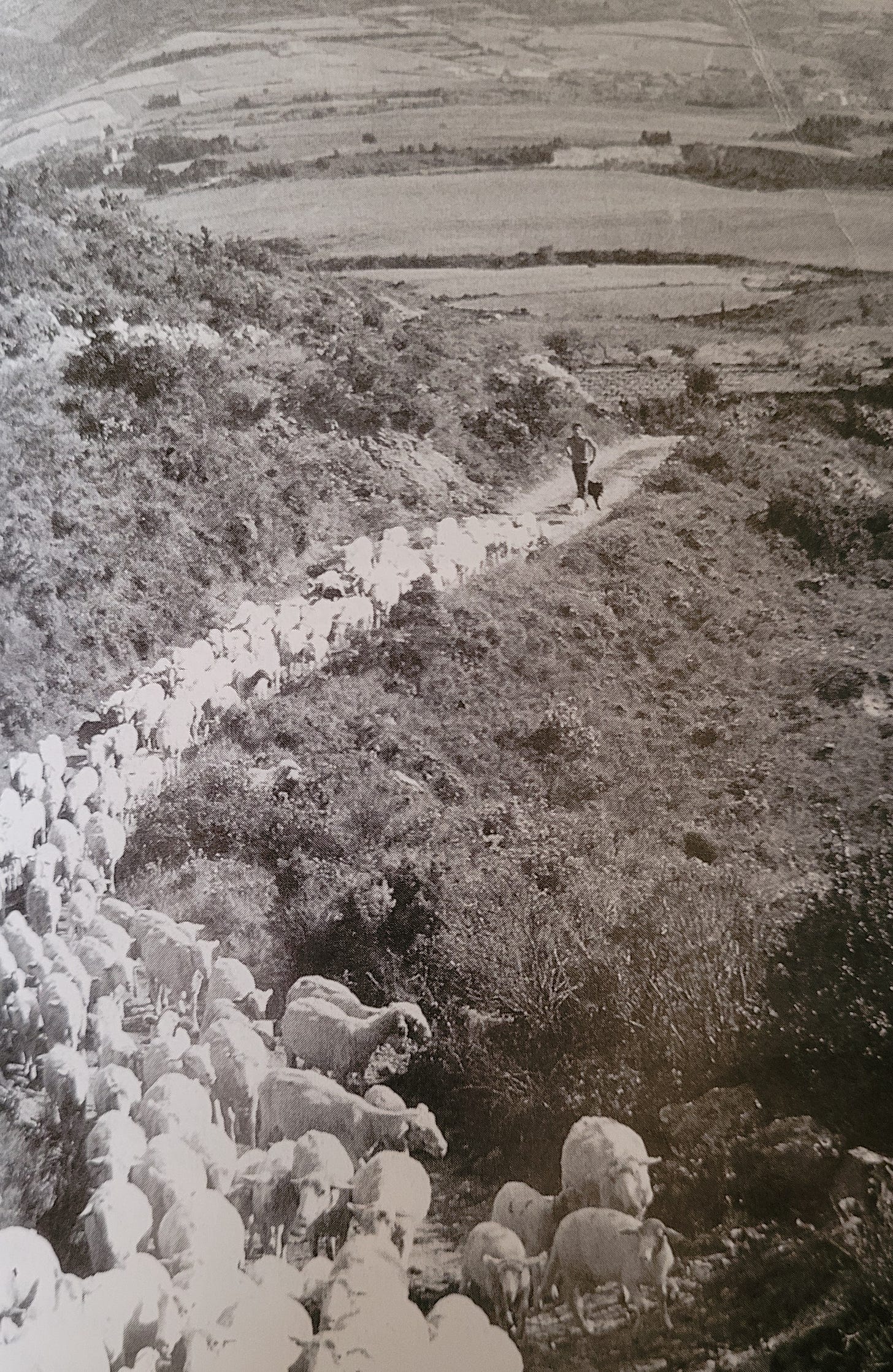When global becomes local
Climate change, fire… sheep, wine and solar panels
The fire started above Ribaute © V Yuill
In 2025, the Corbières are burning.
The fire started with a spark at the side of a road in Ribaute, very close to where I live, for reasons as yet unknown. It tore up the hill, whipped by the blustery wind. The Aleppo pines, with the deep-pile carpet of needles at their feet, soon disappeared in black smoke. The holm oaks went with them. At the time of writing 160 km2 between here and the Mediterranean are affected. It is the worst fire in France since 1949. All of our Canadair and Dash planes are working in rotation with helicopters. There are over two thousand firefighters on the ground.
The French strategy for dealing with blazes is to throw resources into the arena at an early stage. From the start of the red alert there was a team of firefighters in Ribaute in readiness. But this time the strategy was foiled by the wind. The flames, it has been reported, stormed through the garrigue and forest at 6km/hr.
It is all too easy to blame climate change and throw up one’s hands in despair. Clearly climate change is a factor: for the last four years we have suffered drought, with rainfall just over half the historic norm.[1] Temperatures now regularly reach the upper thirties Celsius. But although part of the blame lies there, there are many more considerations. One of them is the near disappearance of pastoralism. Since the fire started, we have had a red sky at night and a red sky in the morning, but it is a long time since there were many shepherds to delight or warn.
Some years ago, I talked to Alban Pau, one of the last. Already retired, he pointed across the valley to the Falaise Bleue, the blue cliff. In his day, he told me, there were none of those trees. Forty years ago, the whole area was pasture, but sheep farming became uneconomic. Since then, self-seeded pines and holm oaks have invaded.
Alban and his flock
The second, financially driven change is the reduction in the area dedicated to growing grapes. In the 1970s, Corbières wine started its long journey to change its image, from plonk to appellation contrôlée. Better wines but fewer bottles, fewer grapes. Fewer natural firebreaks.
Digging up vineyards under the high tension lines
So, don’t just blame climate change, there are other factors. And a study of them can lead to innovative mitigation strategies.
My village, Camplong d’Aude, is looking to the future. With an economy reliant on wine production, the drought and changing global consumer demand are threatening viability. Vineyards are being abandoned, increasing fire risk. The latest project is to replace them with solar panels and sheep. It is a complicated equation, one that I will explore in another article. Nevertheless, it is a spark of hope for the future.
[1] https://www.meteoferrals.fr/articles.php?lng=fr&pg=1308&mnuid=700&tconfig=0




